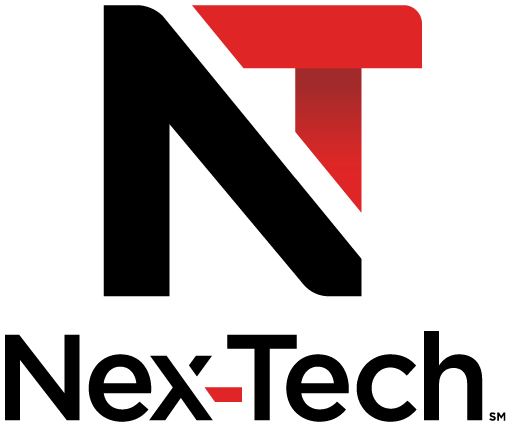Marketing can feel like a guessing game sometimes — but it doesn’t have to be. In a recent webinar, Dustin Schlaefli, Nex-Tech’s Director of Customer Engagement, broke down some of the most important marketing metrics that help businesses make smarter decisions. Whether you’re new to marketing or just want a refresher, here’s what you need to know.
What Marketers Are Tracking Today
Dustin shared results from a recent survey at the NTCA Marketing and Sales Conference. The big takeaway? Marketers are keeping a close eye on a few key numbers:
- Churn rate (how many customers leave)
- Net Promoter Score (NPS) (how likely customers are to recommend you)
- Average revenue per customer
These numbers help businesses understand what’s working — and what’s not. By tracking these metrics, companies can spot trends, adjust their strategies, and make better decisions about where to spend their time and money.
Why Churn Matters
Churn might sound like just another business term, but it’s actually a powerful signal. Dustin explained that churn tells you how many customers are leaving your service — and why that matters. A high churn rate can mean customers are unhappy, your competitors are offering something better, or your service isn’t meeting expectations.
At Nex-Tech, they use a churn report to track this number closely. By comparing their churn rate to industry benchmarks, they can see how they’re doing and where they need to improve. It’s not just about keeping customers — it’s about understanding what makes them stay or go.
What’s a Net Promoter Score?
Dustin talked about the Net Promoter Score, or NPS. This score is based on a simple question: “How likely are you to recommend us to a friend or colleague?” Customers answer on a scale from 0 to 10, and their responses help businesses measure loyalty.
Nex-Tech uses NPS to get a clear picture of how their customers feel. If the score is high, it means people are happy and likely to spread the word. If it’s low, it’s a sign that something needs to
change. Dustin explained how tracking NPS over time helps Nex-Tech improve their service and build stronger relationships with their customers.
Marketing can feel like a guessing game sometimes — but it doesn’t have to be. In a recent webinar, Dustin Schlaefli, Nex-Tech’s Director of Customer Engagement, broke down some of the most important marketing metrics that help businesses make smarter decisions. Whether you’re new to marketing or just want a refresher, here’s what you need to know.
What Marketers Are Tracking Today
Dustin shared results from a recent survey at the NTCA Marketing and Sales Conference. The big takeaway? Marketers are keeping a close eye on a few key numbers:
· Churn rate (how many customers leave)
· Net Promoter Score (NPS) (how likely customers are to recommend you)
· Average revenue per customer
These numbers help businesses understand what’s working — and what’s not. By tracking these metrics, companies can spot trends, adjust their strategies, and make better decisions about where to spend their time and money.
Why Churn Matters
Churn might sound like just another business term, but it’s actually a powerful signal. Dustin explained that churn tells you how many customers are leaving your service — and why that matters. A high churn rate can mean customers are unhappy, your competitors are offering something better, or your service isn’t meeting expectations.
At Nex-Tech, they use a churn report to track this number closely. By comparing their churn rate to industry benchmarks, they can see how they’re doing and where they need to improve. It’s not just about keeping customers — it’s about understanding what makes them stay or go.
What’s a Net Promoter Score?
Dustin talked about the Net Promoter Score, or NPS. This score is based on a simple question: “How likely are you to recommend us to a friend or colleague?” Customers answer on a scale from 0 to 10, and their responses help businesses measure loyalty.
Nex-Tech uses NPS to get a clear picture of how their customers feel. If the score is high, it means people are happy and likely to spread the word. If it’s low, it’s a sign that something needs to
change. Dustin explained how tracking NPS over time helps Nex-Tech improve their service and build stronger relationships with their customers.
ROI and Customer Acquisition Cost
Dustin also explained two more important metrics: ROI (Return on Investment) and CAC (Customer Acquisition Cost). ROI shows how much value you’re getting from your marketing efforts. CAC tells you how much it costs to bring in a new customer.
These numbers help businesses figure out if their marketing is actually working. If you’re spending more to get a customer than they’re worth, that’s a problem. But if your ROI is strong, it means your marketing is paying off.
Nex-Tech uses a special ROI calculator to track this. Dustin walked through how it works, and what data you need to use it. It might sound technical, but it’s really about making sure your marketing dollars are being spent wisely.
Marketing metrics might seem like just numbers, but they tell a story — about your customers, your business, and your future. If you’re not tracking them yet, now is a great time to start.
Want help making sense of your own marketing data? Reach out to Nex-Tech’s Creative team. We’re here to help you turn numbers into action.
Dustin also explained two more important metrics: ROI (Return on Investment) and CAC (Customer Acquisition Cost). ROI shows how much value you’re getting from your marketing efforts. CAC tells you how much it costs to bring in a new customer.
These numbers help businesses figure out if their marketing is actually working. If you’re spending more to get a customer than they’re worth, that’s a problem. But if your ROI is strong, it means your marketing is paying off.
Nex-Tech uses a special ROI calculator to track this. Dustin walked through how it works, and what data you need to use it. It might sound technical, but it’s really about making sure your marketing dollars are being spent wisely.
Marketing metrics might seem like just numbers, but they tell a story — about your customers, your business, and your future. If you’re not tracking them yet, now is a great time to start.
Want help making sense of your own marketing data? Reach out to Nex-Tech’s Creative team. We’re here to help you turn numbers into action.


